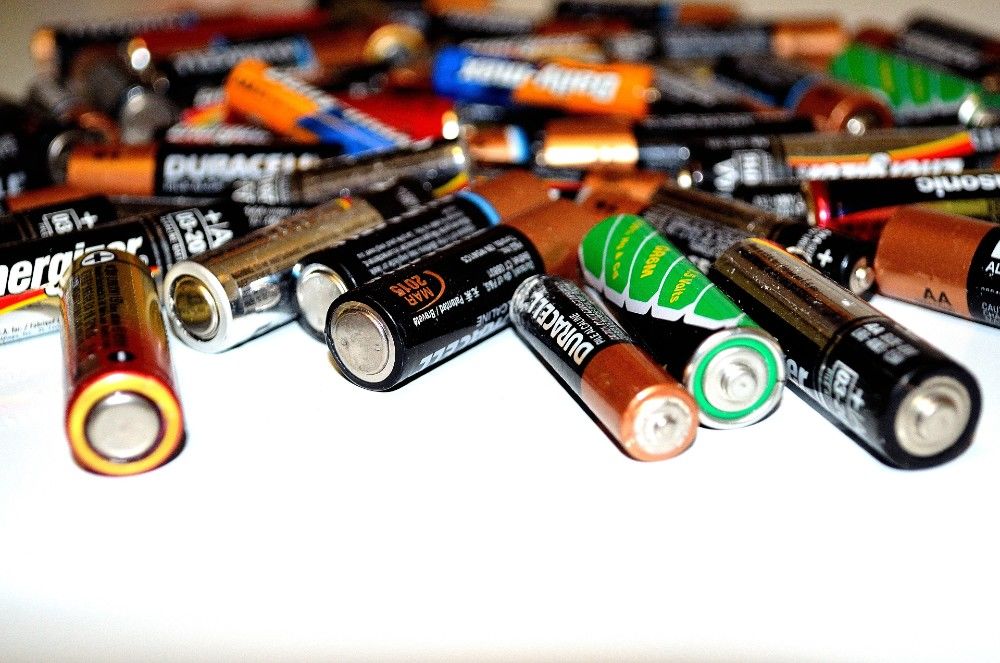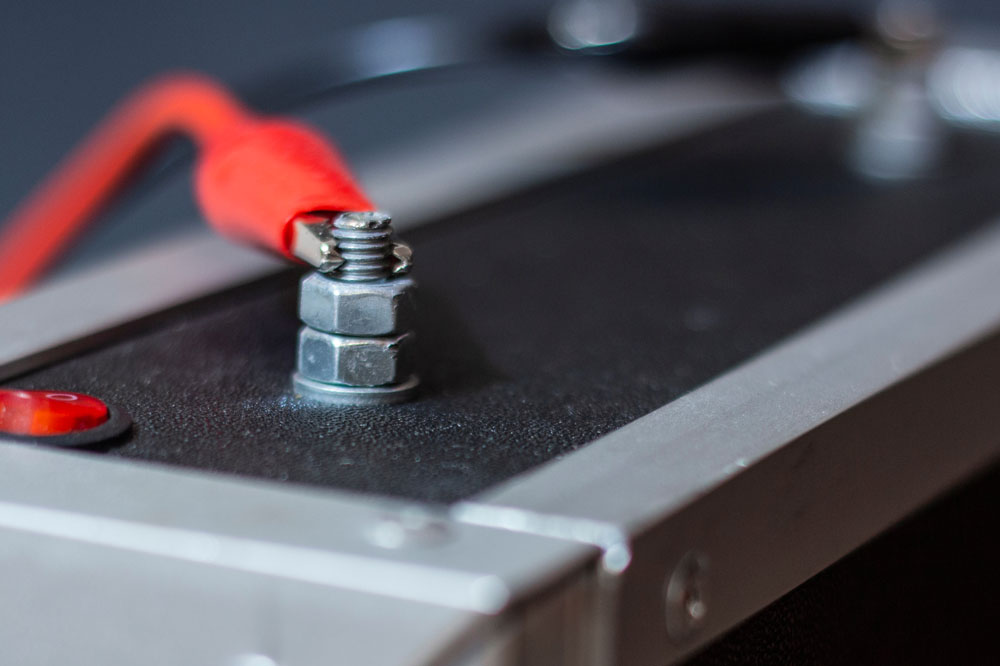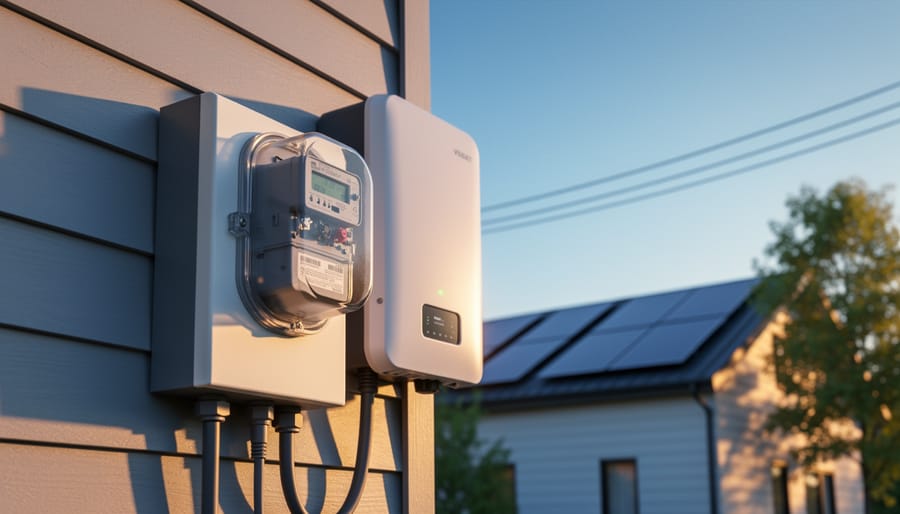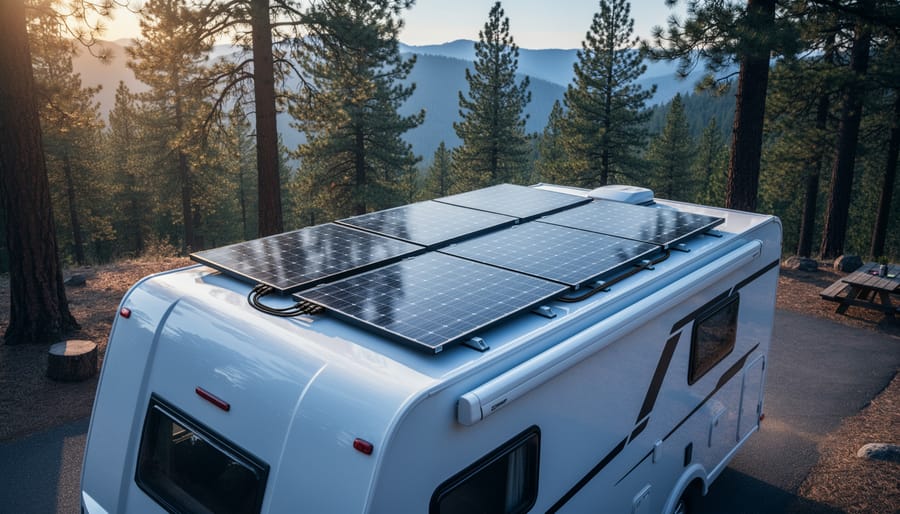Can I Use a Higher mAh Battery in Solar Lights?
Updated:

Most solar lights use lower mAh batteries, but you can use higher mAh batteries without causing any damage or going through unneeded stress. However, you must pay attention to certain factors such as output voltage rating and amperage.
Factors to Consider Before Switching to Higher mAh Batteries
Voltage
Voltage is the primary factor to consider when replacing your solar rechargeable batteries with higher mAh batteries.
If you switch your solar light battery to a low-voltage battery, the voltage from the new battery may not be enough to power the lights. Even if the battery does power the lights, they may not be as bright as they should be.
On the flip side, things might go bad if the replacement has a higher voltage than the rechargeable batteries inside the solar light.
For one, a high voltage will stress the solar light’s circuit. But apart from that, overvoltage can damage the solar light by shortening the lifespan of insulators.
A potential reduction in efficiency also comes with overvoltage through overheating. In fact, overheating contributes to many circuit issues that come with overvoltage.
More than anything, you should avoid replacing your solar light batteries with batteries whose output voltage exceeds the solar light’s ratings. Then, to ensure top performance, ensure the voltage of the new battery is not too low.
Current
As with voltage, you want to ensure that the amperage of the replacement battery for your solar lights is within range.
If you opt for a solar light battery whose output current exceeds the rating of your solar lights, you just might damage the system. While a circuit breaker or fuse might prevent such damage, it isn’t worth gambling.
Size and Shape
This goes without saying, but replacing solar batteries with something of the same size and shape is more proper. Otherwise, the replacement batteries may not fit in the battery compartment of your solar light.
Of course, if the battery does not fit in the battery compartment, you’d have to let it hang out. But then, this kills any aesthetics the solar light has. More importantly, it leaves the whole solar light system open to damage.
Finding a replacement of the same shape and size may sometimes be hard. But at such times, you can opt for something smaller – anything that fits in the battery compartment.
Rechargeability
Most, if not all, solar lights use rechargeable batteries. So, when switching to a battery with a higher mAh capacity, you should get a rechargeable battery.
The solar panel will not charge the battery if you use non-rechargeable batteries in solar lights. So, once the battery is depleted, it will be of no use to you, and the lights will not come on.
Besides, in some cases, you’d have to modify the build of the solar-powered lights to accommodate normal batteries. So, it may not even be worth it.
Most importantly, non-rechargeable batteries might work as temporary replacements. But they can damage solar panels – and solar lights as a whole – if used for too long.
Charging Time
You might not be able to do too much about this, but when buying new batteries with higher capacity, pay attention to charging time.
Generally, solar lights rechargeable batteries with higher mAh have longer charging times. This checks out since they store more charge.
Solar light manufacturers sometimes throw in innovative technology that makes their batteries charge faster than their counterparts. So, you could try checking multiple products out to find one with the fastest charging time.
Besides comparing products, you should assess the average duration of sunlight your solar lights get per day. Then, compare that value to the estimated charging time of the new batteries. Getting a full charge shouldn’t be an issue if the charging time falls within the range.
Charging Cycles
The charging cycle of solar light batteries is an indicator of their lifespan. Of course, you are in the market for something that will last. So, when choosing, opt for a battery with a high number of cycles.
Typically, Li-ion rechargeable batteries have the highest number of cycles. Their recharge cycle ranges anywhere from 500 to 2000.
Types of Rechargeable Battery Used in Solar Lights
Lithium-ion Batteries
Lithium-ion batteries are becoming increasingly popular in solar lights. Unsurprisingly, they are long-lasting, lighter than many alternatives, and have very low discharge rates.
Lithium-ion batteries also have a higher safety margin, better temperature tolerance, and higher durability. Their high energy density also allows them to hold more energy within a relatively smaller space. Plus, they have no memory effect.
But on the flip side, Li-ion batteries are expensive. Like other batteries for solar lights, they age. They also require some circuit protection.
Nickel-Cadmium Batteries
Nickel-cadmium batteries, also known as NiCd batteries, are one of the oldest types of rechargeable batteries. They come at a relatively low cost, and unsurprisingly, they are easy to produce.
Relative to lead-acid batteries, NiCd batteries offer a fair level of energy density. Overall, they are pretty stable.
NiCd batteries are not quite eco-friendly. They suffer from the memory effect, discharge power pretty fast, and they have little or no prospects of being old technology.
Nickel-Metal Hydride Batteries (Ni-MH)
Nickel-Metal Hydride Batteries are more like the newer version of the NiCd – although they’re not so new.
Unlike NiCd, NiMH batteries have a higher energy density. So, they can hold more charge per unit space. They also have a longer lifespan and lower self-discharge rate than NiCds. They are also less prone to memory effects and more eco-friendly.
While not as bad as NiCds, the memory effect of NiMH batteries is still a downside. Apart from that, their discharge rate is still pretty high while their lifespan and output current is typically limited.
Lead Acid Batteries
Lead-acid batteries are the oldest type of rechargeable batteries. They’ve been around for more than a century, and as expected, they are not the most advanced option.
Lead-acid batteries are relatively cheaper than the rest. They are highly resistant to overcharging, durable, and have no memory effect.
However, they require a lot of maintenance and have high discharge rates and low energy densities. Then like NiCds, they are not eco-friendly.
Advantages of Choosing a Higher mAh Battery in Solar Lights
- The primary upside of choosing a higher mAh battery in solar lights is longer lighting time. Since a higher-capacity battery will store more charge, your solar lights work for longer periods.
- With a higher battery capacity, you become less dependent on the sun.
Disadvantages of Using a Higher mAh Battery for Solar Lights
- Higher mAh batteries typically take longer to get a full charge.
- You may need more solar panels or solar panels with higher ratings to get a full charge within a reasonable time.
FAQs
How Long Do Rechargeable Batteries Last in Solar Lights?
Solar rechargeable batteries (especially Li-ion batteries) can last around 2-3 years when properly maintained. However, with poor usage, they may only last 6 months to 1 year.
Do I Need Special Batteries For Solar Lights?
In many cases, solar lights require specialized batteries. So, you may not be able to use just any rechargeable battery in most solar lights.
However, in some cases, solar lights accept regular rechargeable batteries. So, you won’t have to get specialized batteries for such.
What Is the Difference Between a Solar Battery and a Normal Battery?
Discharge Current
Solar batteries typically have a high discharge current, allowing them to power devices with high ratings. On the flip side, the discharge current of normal batteries usually only allows them to power smaller devices.
Cost
Solar batteries are typically more expensive than their regular counterparts.
Power Source
You can charge solar cells with solar power and mains electricity. However, a normal battery, if rechargeable, usually gets its charge from mains electricity.
Also, a normal battery may be rechargeable or non-rechargeable. On the other hand, a solar battery is almost always rechargeable.
Durability
Solar batteries are generally more durable than normal ones. Since they are exposed to various elemental conditions, manufacturers design them to withstand those conditions.
With a normal battery, such is not usually the case. Very few cases exist where a normal battery would be used outside a building. So, the design is not as seal-tight as that of solar batteries.
Besides elemental exposure, solar system batteries can withstand fluctuating input power. This is only right since the intensity of the sunlight reaching the solar panel varies throughout the day.
A normal battery cannot withstand fluctuations, as well as a solar battery. Since input power from the grid is typically stable, they do not need extra protection from fluctuations.
How Do I Fix My Solar Lights Not Charging?
When your solar light is not charging, you might be able to fix it by doing any of the following:
- Clean the solar panel if it isn’t clean.
- Check the solar panel for water ingress. Water in solar panels can cause damage, affecting solar lights’ charging. Solar panels with water ingress might need replacement.
- Ensure the solar panel is properly placed and not covered by shade. Adjust the solar panel where necessary.
- Ensure the battery is not shielded from the terminals by a pull tab.
- Test with regular alkaline rechargeable batteries to confirm the batteries are bad. If the batteries are bad, replace them.
While you can get a rechargeable battery with higher mAh for your solar lights, try not to go too high. Even when you go very high, ensure you never exceed the maximum voltage and current of your solar lights.










